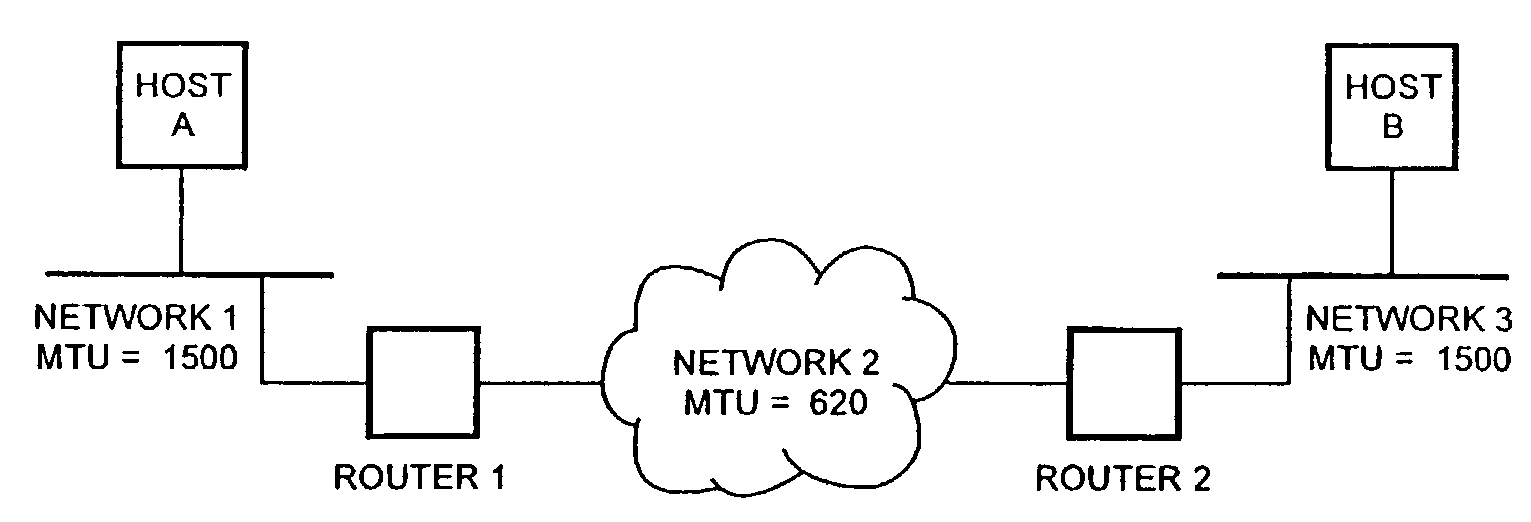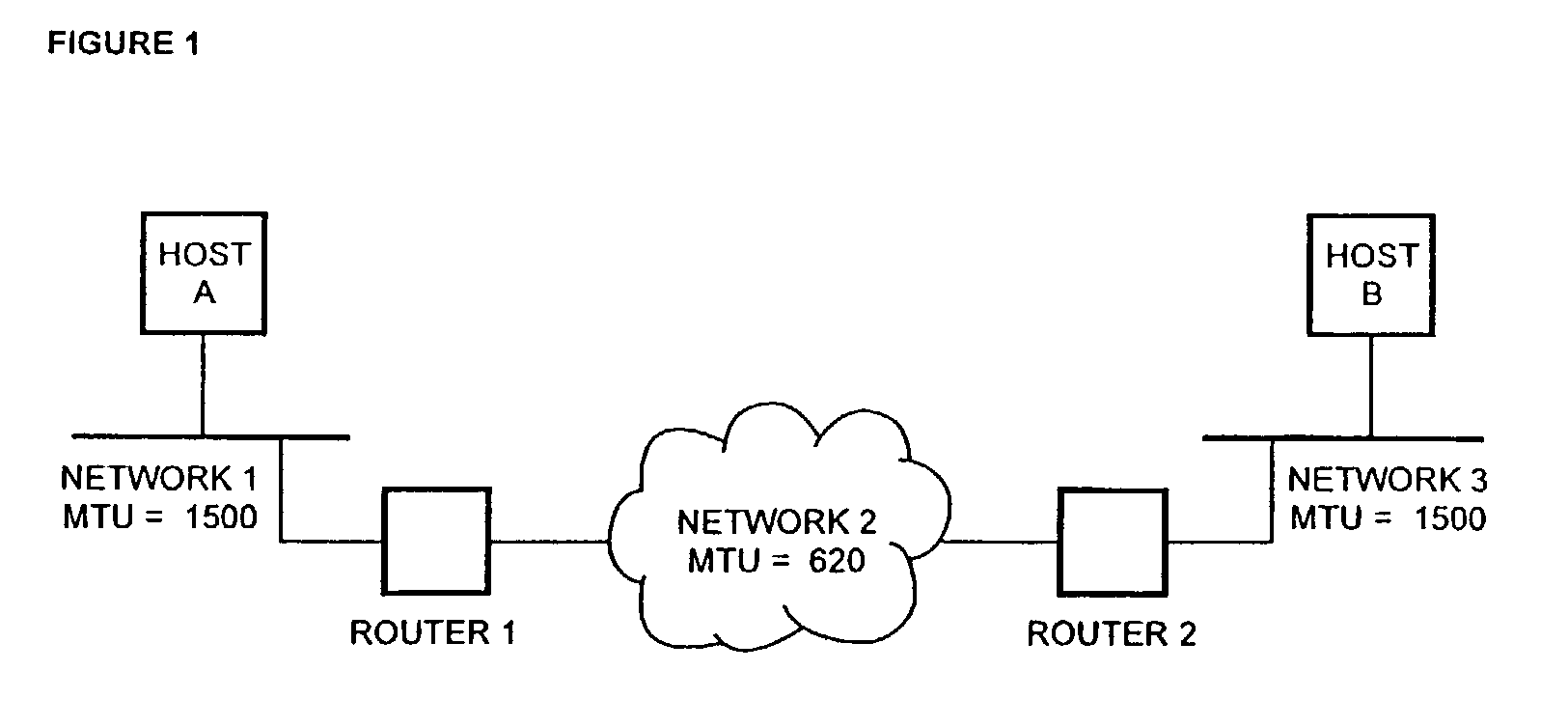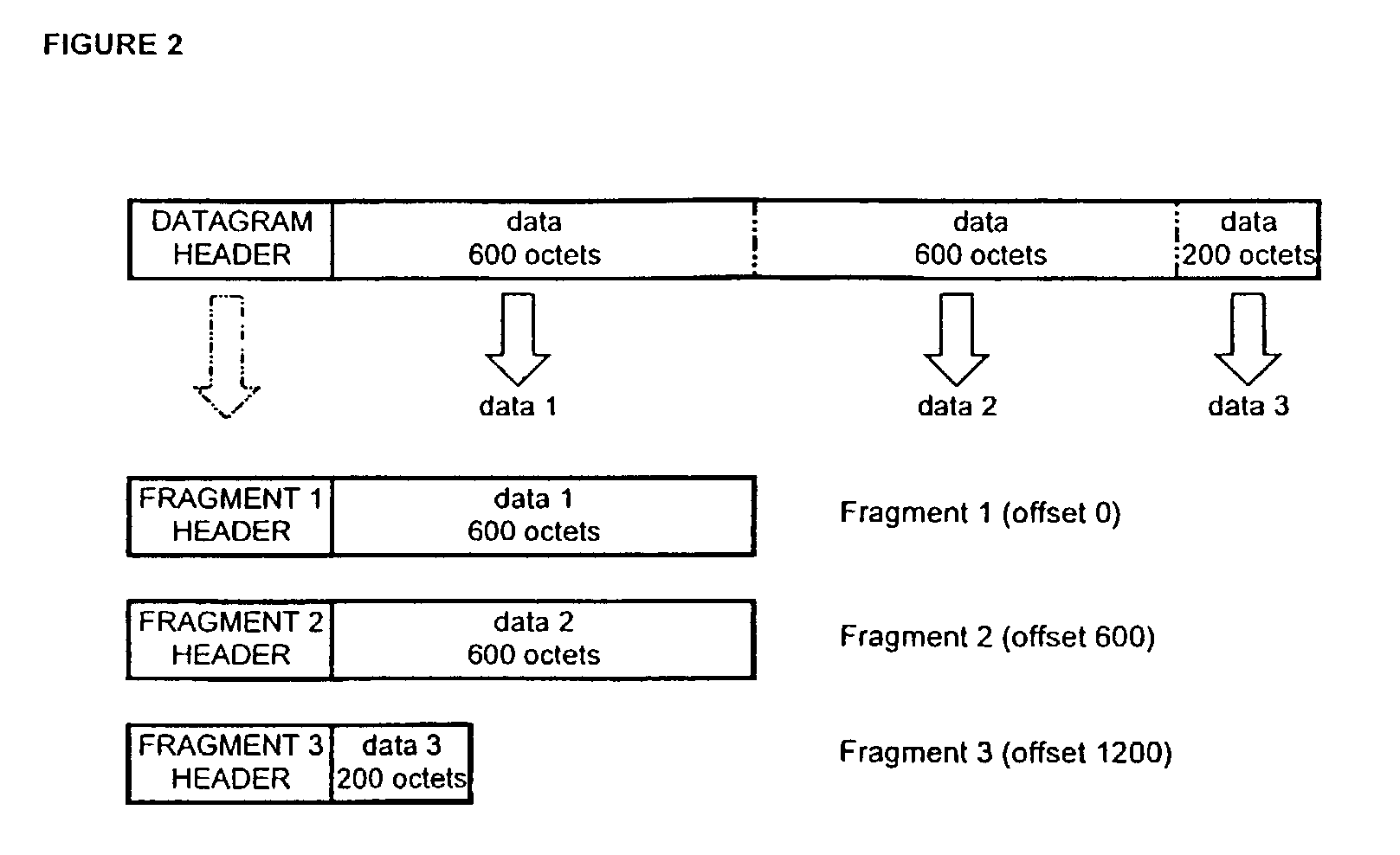Method and apparatus for data normalization
a traffic data and normalization technology, applied in data switching networks, digital transmission, instruments, etc., can solve the problems of not accurately predicting whether packets received by the network intrusion detection system even reach, packets captured by the network intrusion detection system are ambiguous, and packets that are not correctly reassembled fragments may still be subject to attacks. , to achieve the effect of reducing the amount of memory space required
- Summary
- Abstract
- Description
- Claims
- Application Information
AI Technical Summary
Benefits of technology
Problems solved by technology
Method used
Image
Examples
Embodiment Construction
[0077]FIG. 1 shows two hosts, A and B, attached to a network 1 and a network 3, each with a maximum transfer unit MTU of 1500 octets. Both hosts can therefore generate and send datagrams up to 1500 octets long, while, the path between said Ethernets includes a network 3 with a maximum transfer unit MTU of 620 octets. If hosts A sends host B a datagram larger than 620 octets, router 1 will split the datagram into fragments that can be encapsulated in frames of the underlying network. Fragmentation of a datagram as shown in FIG. 2 has been described above.
[0078]As further described above fragmentation of datagrams can result in ambiguities which can be exploited by an attacker in order to by-pass the network intrusion detection system NIDS or misuse end-systems or the network intrusion detection system NIDS itself.
[0079]Different attacks which are based on knowledge of the network's topology or differences of handling fragmentation or reassembly procedures in the end-systems and in th...
PUM
 Login to View More
Login to View More Abstract
Description
Claims
Application Information
 Login to View More
Login to View More - R&D
- Intellectual Property
- Life Sciences
- Materials
- Tech Scout
- Unparalleled Data Quality
- Higher Quality Content
- 60% Fewer Hallucinations
Browse by: Latest US Patents, China's latest patents, Technical Efficacy Thesaurus, Application Domain, Technology Topic, Popular Technical Reports.
© 2025 PatSnap. All rights reserved.Legal|Privacy policy|Modern Slavery Act Transparency Statement|Sitemap|About US| Contact US: help@patsnap.com



